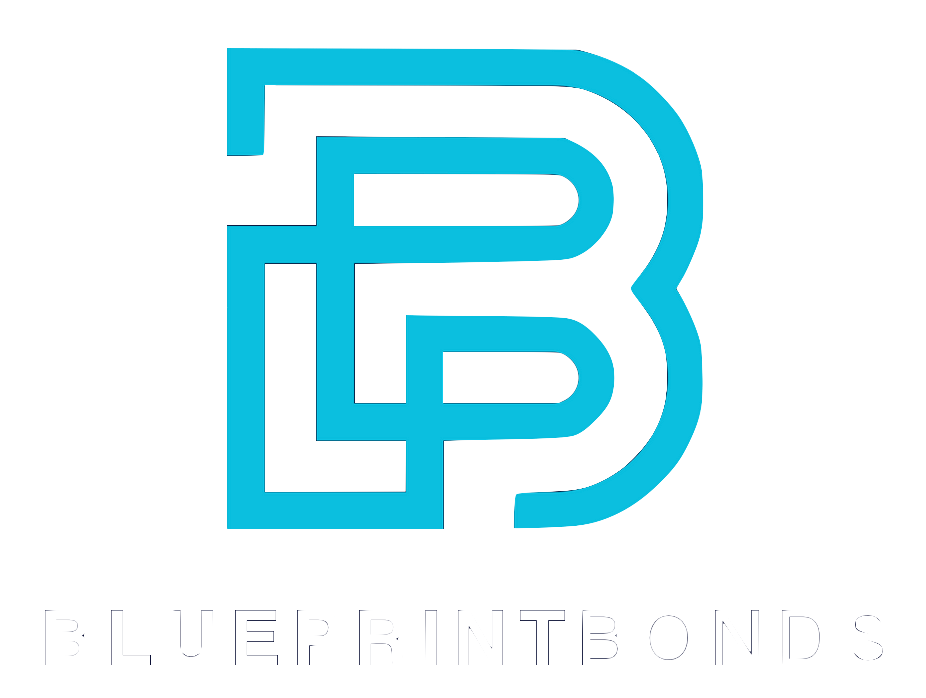In recent years, the landscape of education has evolved significantly, with many families opting for private schooling as an alternative to public education. This shift has led to an increased demand for private school funding and financial backing, particularly in Arizona. One of the key components in this financial ecosystem is the Arizona private school bond. This article aims to provide a comprehensive overview of what a private school bond is, its significance, and how it impacts both schools and families.
Understanding Private School Bonds
Private school bonds are financial instruments that help schools secure funding for various operational and developmental needs. These bonds are typically issued by the school or an associated organization and can be used for a range of purposes, from facility improvements to educational programs.
What is a Private School Bond?
A private school bond is essentially a loan that a school takes out to finance its projects. Investors purchase these bonds, providing the school with the necessary capital upfront. In return, the school commits to paying back the investors over a specified period, usually with interest. This arrangement allows schools to access funds without relying solely on tuition fees or donations. By leveraging bonds, schools can undertake significant projects that might otherwise be financially out of reach, such as constructing new buildings, renovating existing facilities, or expanding their educational offerings.
Types of Private School Bonds
There are several types of private school bonds, each serving different purposes. Some common types include:
- General Obligation Bonds: These bonds are backed by the school’s ability to levy taxes or use other revenue sources to repay the debt.
- Revenue Bonds: These bonds are repaid through the revenue generated by the school, such as tuition fees or fundraising efforts.
- Tax-Exempt Bonds: These bonds offer tax benefits to investors, making them an attractive option for funding educational projects.
In addition to these common types, private schools may also explore innovative financing options such as green bonds, which are specifically designed to fund environmentally sustainable projects. These bonds not only contribute to the school's infrastructure but also align with the growing emphasis on sustainability in education. Furthermore, some schools might consider issuing bonds that are tied to specific outcomes, such as improved student performance or increased graduation rates, thereby creating a performance-based funding model that can attract socially responsible investors.
The process of issuing bonds involves careful planning and consideration. Schools typically work with financial advisors to assess their funding needs and determine the most suitable type of bond to issue. This process includes evaluating the potential risks and benefits, as well as understanding the legal and regulatory requirements involved in bond issuance. By engaging in this thorough planning, schools can ensure they are making informed decisions that will positively impact their financial health and educational mission.

The Importance of Private School Bonds
Private school bonds play a crucial role in the financial health of educational institutions. They enable schools to undertake significant projects that may otherwise be financially unfeasible. This section explores the importance of these bonds in greater detail.
Funding Infrastructure and Facilities
One of the primary uses of private school bonds is to fund infrastructure improvements. Many private schools require renovations or expansions to accommodate growing student populations or to enhance educational offerings. By issuing bonds, schools can secure the necessary funds to build new classrooms, libraries, or recreational facilities, ensuring a conducive learning environment. These enhancements not only improve the aesthetic appeal of the school but also foster a sense of community among students and staff, as modern facilities often become hubs for various school activities and events. Furthermore, well-designed spaces can facilitate innovative teaching methods, allowing educators to engage students in more interactive and effective ways.
Enhancing Educational Programs
Beyond physical improvements, private school bonds can also be directed towards enhancing educational programs. Schools can invest in new technologies, curriculum development, or extracurricular activities that enrich the student experience. This investment is vital for maintaining competitive educational standards and attracting prospective students. For instance, funding from bonds might enable schools to implement advanced science labs, robotics programs, or arts initiatives that encourage creativity and critical thinking. Additionally, these programs often lead to increased student engagement and higher academic performance, as students are more likely to thrive in an environment that supports diverse learning opportunities and personal interests.
Financial Stability and Growth
Utilizing private school bonds can lead to greater financial stability for educational institutions. By diversifying funding sources and reducing reliance on tuition alone, schools can better manage their budgets and plan for future growth. This financial flexibility is essential in an increasingly competitive educational landscape. Moreover, the ability to secure long-term financing through bonds allows schools to undertake ambitious projects without the immediate pressure of upfront costs. This strategic approach not only ensures that schools can maintain and improve their facilities and programs but also positions them to respond effectively to changing educational demands and economic conditions. As a result, schools can cultivate a more sustainable financial model that supports ongoing development and innovation.
Community Engagement and Support
In addition to the direct financial benefits, private school bonds can foster greater community engagement and support. When schools embark on significant projects funded by bonds, they often involve parents, alumni, and local businesses in the planning and execution phases. This collaborative approach not only strengthens relationships within the community but also encourages a sense of ownership and pride in the school’s achievements. Community members may be more inclined to contribute to fundraising efforts or volunteer their time when they see tangible improvements resulting from bond initiatives. Furthermore, as schools enhance their facilities and programs, they can also host community events, workshops, and open houses that invite local families to experience the school environment firsthand, thereby building a stronger connection between the school and the surrounding community.
The Process of Issuing Private School Bonds
Issuing private school bonds involves a series of steps that require careful planning and execution. Understanding this process is vital for schools considering this funding option.
Step 1: Assessing Financial Needs
The first step in the bond issuance process is assessing the financial needs of the school. This involves identifying specific projects or initiatives that require funding and estimating the total cost. Schools must conduct thorough research to ensure that the financial projections are realistic and achievable. Additionally, it is essential for schools to consider both short-term and long-term financial impacts, as well as the potential return on investment for the projects being funded. This comprehensive assessment helps in prioritizing projects that align with the school's mission and strategic goals, ensuring that the funds are allocated effectively.
Step 2: Engaging Financial Advisors
Once the financial needs are assessed, schools typically engage financial advisors or consultants who specialize in bond issuance. These professionals help schools navigate the complexities of the bond market, providing guidance on structuring the bonds, determining interest rates, and identifying potential investors. They also assist in preparing the necessary documentation, such as offering statements and financial disclosures, which are crucial for building trust with investors. Furthermore, financial advisors can provide insights into market conditions and trends, helping schools time their bond issuance to maximize funding opportunities and minimize costs.
Step 3: Issuing the Bonds
After the necessary preparations are complete, the school can proceed with issuing the bonds. This involves marketing the bonds to potential investors, which may include individuals, institutions, or philanthropic organizations. Schools often organize presentations or informational sessions to explain the benefits of investing in their bonds, highlighting how the funds will be used to enhance educational facilities or programs. Once the bonds are sold, the school receives the funds and can begin implementing its projects. Additionally, it is crucial for schools to establish a transparent communication plan to keep investors informed about the progress of the funded projects, as this fosters ongoing relationships and can lead to future investment opportunities.
Benefits of Private School Bonds for Families
While private school bonds primarily benefit educational institutions, families also stand to gain from this financial mechanism. Here are some of the key benefits for families considering private education.
Access to Quality Education
Private school bonds enable schools to improve their facilities and educational offerings, directly impacting the quality of education available to students. Families can feel more confident in their choice of school, knowing that the institution is investing in its infrastructure and programs. This investment often translates to modern classrooms equipped with the latest technology, libraries stocked with current resources, and laboratories that support hands-on learning experiences. Such improvements not only enhance the learning environment but also attract experienced educators who are eager to teach in well-resourced settings.
Affordability and Tuition Stability
By diversifying funding sources through bond issuance, schools may be able to stabilize tuition rates. This can make private education more affordable for families, as schools are less reliant on tuition increases to fund their operations. Families can benefit from predictable tuition costs, allowing for better financial planning. Additionally, some schools may use the proceeds from bonds to create scholarship programs or financial aid options, further alleviating the financial burden on families. This commitment to affordability ensures that a quality education remains accessible to a broader range of students, fostering a diverse and inclusive school community.
Enhanced Extracurricular Opportunities
With the funds raised through private school bonds, schools can expand their extracurricular offerings, providing students with a well-rounded educational experience. Families may find that their children have access to a wider range of sports, arts, and enrichment programs, enhancing their overall development. These opportunities not only allow students to explore their interests and talents but also promote teamwork, leadership, and social skills. Furthermore, schools can invest in facilities such as theaters, sports complexes, and art studios, which not only enrich the student experience but also serve as community hubs for events and gatherings, fostering a strong sense of belonging among families.
Community Engagement and Networking
Private school bonds can also strengthen community ties by encouraging family involvement in school activities and initiatives. As schools enhance their facilities and programs, families often find themselves more engaged in the school community, attending events, volunteering, and participating in decision-making processes. This increased engagement can lead to valuable networking opportunities, as parents connect with other families, educators, and local businesses. Such relationships can provide support not only within the educational context but also in broader social and professional realms, enriching the overall experience for families.

Challenges and Considerations
Despite the many advantages of private school bonds, there are also challenges and considerations that schools and families should keep in mind. Understanding these factors is crucial for making informed decisions.
Debt Management
One of the primary challenges associated with private school bonds is debt management. Schools must ensure that they can meet their financial obligations, including interest payments and principal repayment. Failure to manage debt effectively can lead to financial strain and impact the school’s operations. This includes not only the immediate financial responsibilities but also the long-term implications of accruing debt. Schools must engage in careful budgeting and forecasting to ensure that they can sustain their financial health over time, especially as they plan for future growth and development.
Market Fluctuations
The bond market can be volatile, and changes in interest rates or investor sentiment can impact the success of bond issuance. Schools must be prepared for potential fluctuations and have contingency plans in place to address any unforeseen challenges. For instance, if interest rates rise unexpectedly, the cost of borrowing could increase, making it more difficult for schools to finance their projects. Additionally, schools should consider diversifying their funding sources to mitigate risks associated with reliance on a single financing method, thus ensuring they have a robust financial strategy in place.
Regulatory Compliance
Issuing bonds involves navigating a complex regulatory landscape. Schools must comply with various laws and regulations, which can be time-consuming and require legal expertise. Ensuring compliance is essential to avoid legal issues that could jeopardize the bond issuance process. Furthermore, schools need to stay informed about changes in legislation that may affect their bond offerings. Engaging with legal and financial advisors who specialize in educational finance can provide valuable insights and help schools navigate these complexities more effectively. This proactive approach not only aids in compliance but also builds trust with investors and stakeholders, reinforcing the school's commitment to transparency and accountability.
Conclusion
In conclusion, Arizona private school bonds are a vital financial tool that enables educational institutions to secure funding for essential projects and improvements. They play a significant role in enhancing the quality of education available to families and contribute to the overall growth and stability of private schools.
While there are challenges associated with bond issuance, the benefits often outweigh the risks, making it a worthwhile consideration for schools looking to invest in their future. Families can also take comfort in knowing that their chosen schools are committed to providing the best possible educational experience for their children.
As the educational landscape continues to evolve, understanding the intricacies of private school bonds will be essential for both schools and families. By staying informed and engaged, stakeholders can navigate the complexities of funding and ensure that quality education remains accessible to all.
Article By: Ryan Spalding
Licensed Insurance Agent & Bond Specialist
Contact Us

